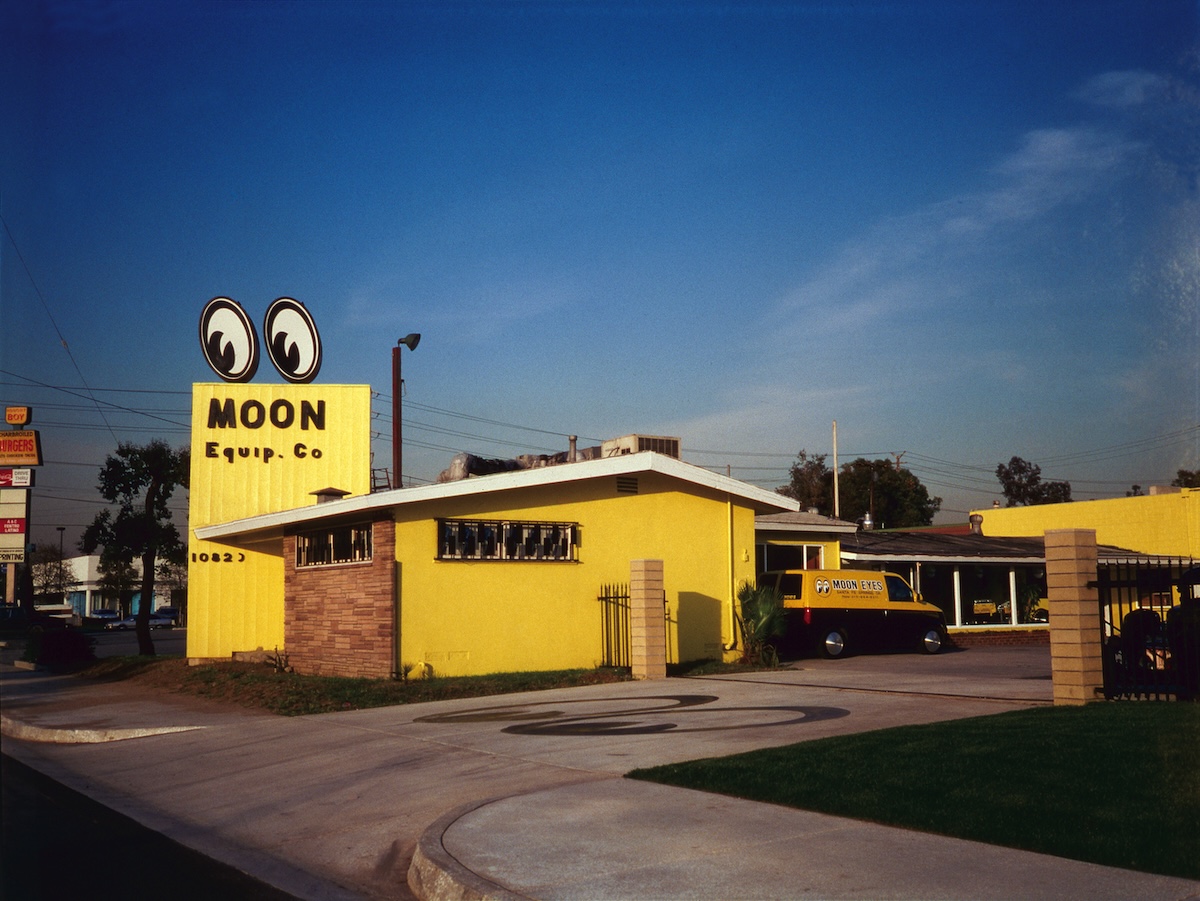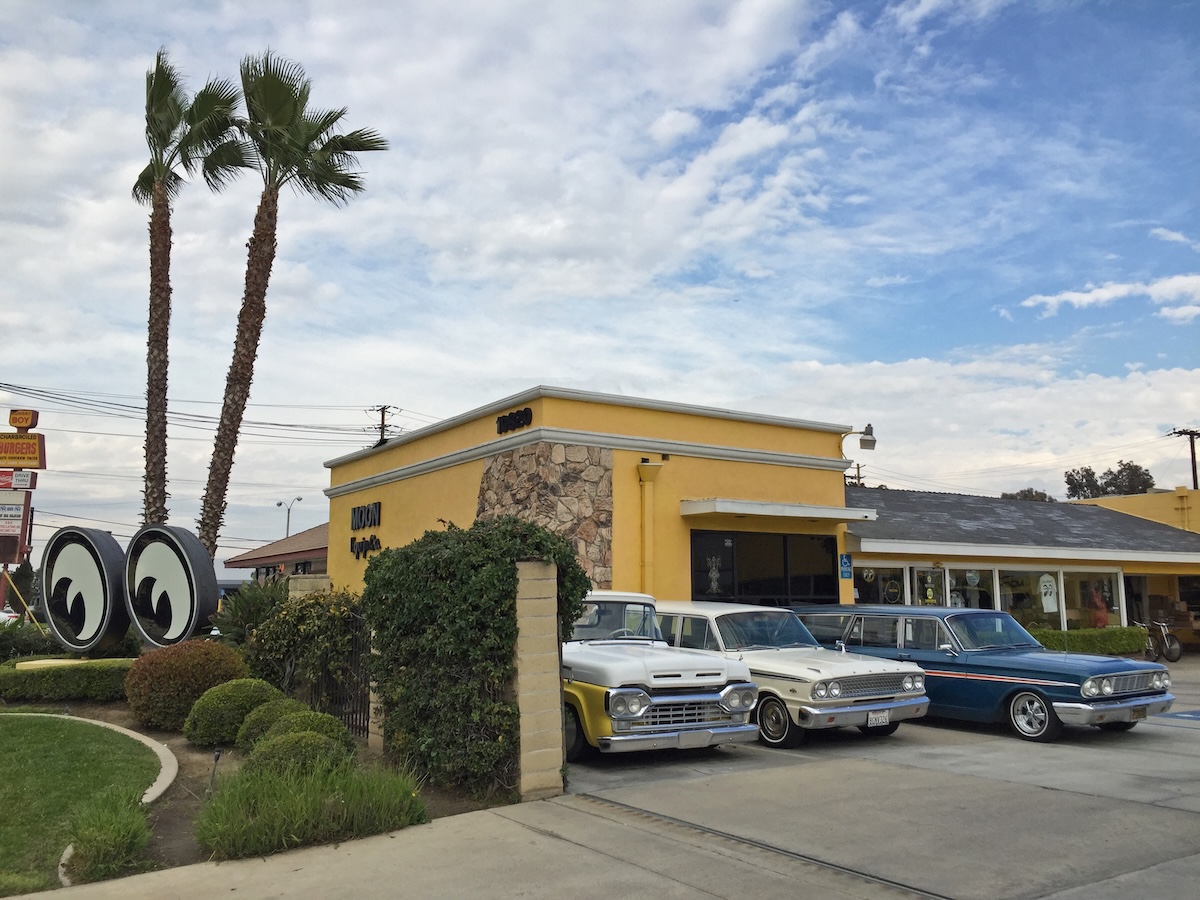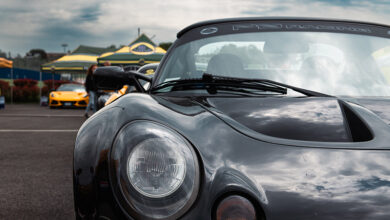All Eyes on Moon Equipment Co. as Classic Speed Shop Marks 75 Years
Known for its wheel discs & other innovations, ‘Mooneyes’ helped build the So-Cal hot rod scene…
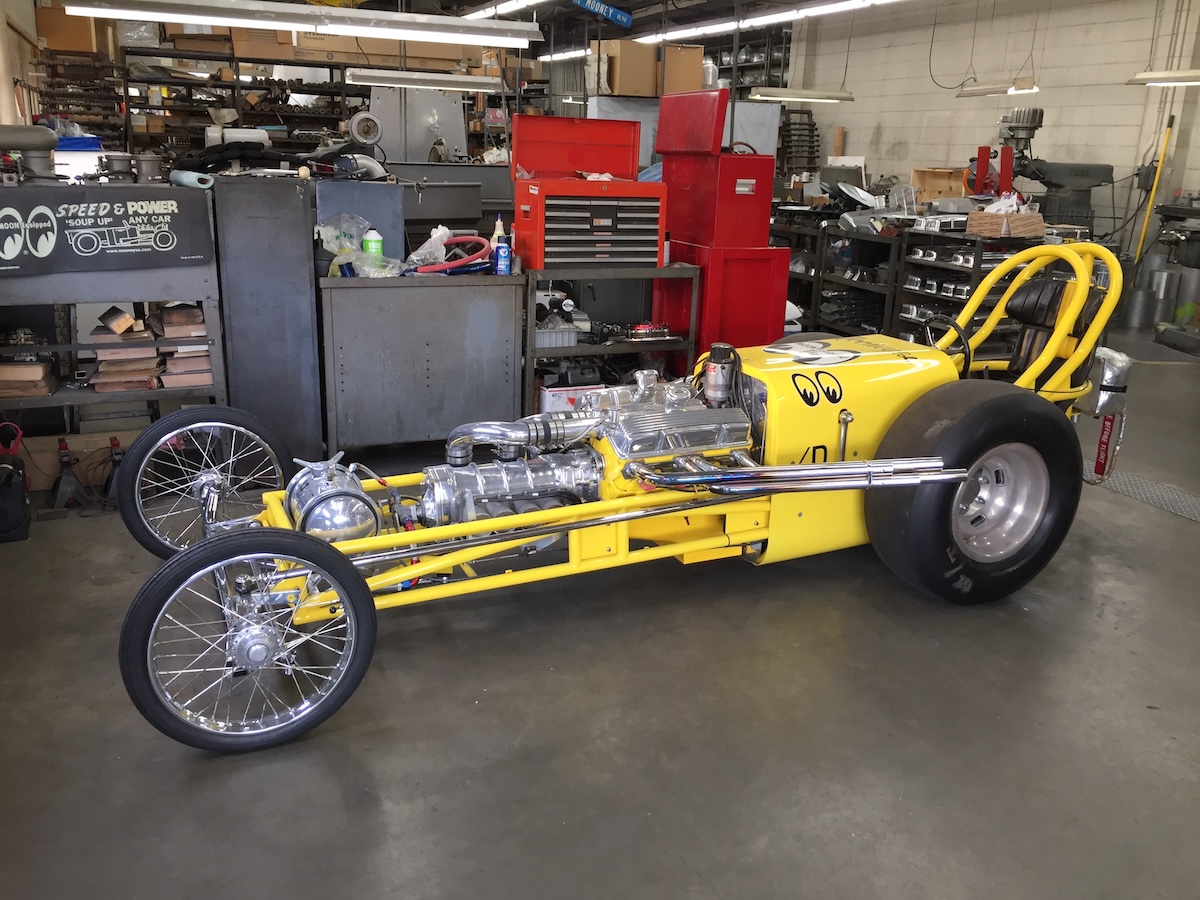
This article originally appeared in the June 2026 issue of THE SHOP magazine.
In 1921, near the “Four Corners” intersection of Telegraph Road and Norwalk Boulevard in Santa Fe Springs, California—a hardscrabble town southeast of Los Angeles—George F. Getty’s (J. Paul’s father) Bell-17 well came in as a 2,500-barrel-a-day gusher that initiated a “black gold” rush.
Unfortunately, Bell-17 caught fire and burned for 45 days (112,500 barrels of oil). Regardless, within a year, Santa Fe Springs became one of the richest oil fields in history—known as “Hell’s Half Acre” and attracting the good and the bad.
The bad included fraudster C.C. Julian who grossly over-sold stock, while the good included Dallas “Pop” Moon, who had moved his family west from New Richland, Minnesota, in 1936.
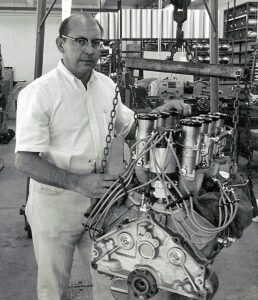
Moon, a Phillips 66 gas station operator, wasn’t all good, though, as the move was precipitated by a $75 bust for, ironically, moonshining. Nevertheless, Pop purchased Tessie’s Café located at 2827 Bloomfield Ave., one block south of Four Corners, to service the local roughnecks and roustabouts.
Pop quickly renamed the eatery Moon’s Café, where his sons, young Dean Ardell and younger brother Dallas Jr., known as “Buzz,” bussed tables and flipped eggs. Their thoughts, however, were out back in the garage—not that it was a real garage, as it had a dirt floor and no roof. Nevertheless, the boys made it their own and eventually built a go-kart track named “Moonza” after the Italian track Monza.
Dean attended Whittier Union High School, where he enjoyed shop classes and lettered in both swimming and wrestling. Across the road from the café was Shaffer Tool Works, which made drilling equipment.
It was there that Dean honed his shop skills and in 1941 machined up a compact aluminum fuel block to distribute fuel to a multi carb setup—it was the first of his many automotive innovations. A tiny American 1931 Austin coupe became his first ride.
After finishing high school, at the tail end of 1946, Dean joined the Merchant Marines and toured the Pacific. After his discharge, he purchased a 12-year-old ’34 Ford 5-window coupe for $400. In 1953, it ran 117.87 mph at a Russetta El Mirage meet after he swapped out the Evans-headed flattie for a ’51 Studebaker OHV V-8.
Dean and Buzz set to work in the shop where Dean reworked his fuel block and began selling copies to Bell Auto Parts and other local speed shops—and thus, the Moon Equipment Co. was born (although unofficially at the time).
MOONRISE
Dean got a paying job at Greenlea Engineering before going to work at Shaffer Tool. In 1949, he moved to Urich-Gibbs, the local Lincoln Mercury dealer, and in November he married Shirley Freer.
One of many tasks Dean performed at Urich-Gibbs was to work on cars for the Carrera PanAmericana Mexican road race. He also helped fellow Whittier racer Ak Miller with his race car.
In the pursuit of speed, Buzz and Dean acquired a neatly chopped ’32 Ford Tudor sedan that they began to race. Without fenders, they ran at the inaugural Santa Ana Drags (July 2, 1950) where they won the Racing Sedan class.
The Tudor was lettered with the “Urich-Gibbs” name in what may well have been one of the earliest examples of corporate sponsorship. Later that year, the Tudor ran 141.17 mph in the “B” Sedan class at a Russetta El Mirage meet.
Consequently, the car got a half-page writeup in the 1951 Hot Rod Handbook, saying it was powered by a 291-ci Merc fitted with Evans heads and intake and three Stromberg 97s. Also shown was Moon’s fuel block with his name cast right into it. The text said the car was also fitted with a Moon ignition.
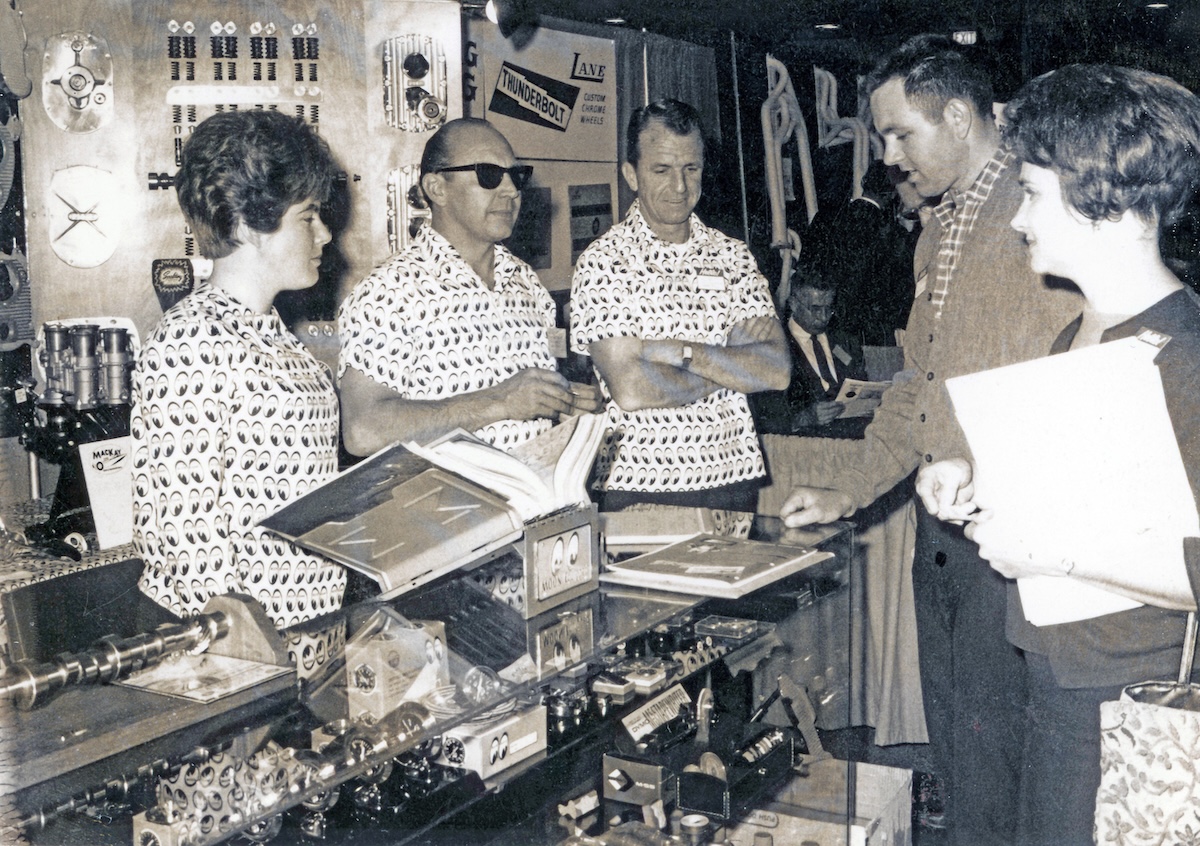
Around this time, and being of prime age, Dean was called up for the Korean War and was scheduled to report to Hill Air Force Base, Utah, in the spring of 1951. Unfortunately, most Korean War records were lost in a fire, so we don’t know his exact service dates.
Nevertheless, the posting would be fortuitous for Dean, as he became a photographer, gaining a skill that would give him an advantage over his competitors when marketing the Moon brand back home.
Dean had expanded his line of homemade products to include fuel linkage and even aluminum fuel tanks when, in October 1953, he decided to go full time and operate Moon Automotive Equipment Co. out of 10935 S. Bloomfield Ave. in Santa Fe Springs—right next to Pop’s Café.
To help boost his business, Dean contributed to car magazines and in April ’53 enjoyed some exposure in HOT ROD when Don Francisco wrote a lengthy feature about Dean swapping the ’51 Studebaker V-8 into his ’34 coupe. Clearly shown on the firewall was a Moon-branded fuel block.
GAINING TRACTION
By the mid-’50s, Dean was advertising in the Bonneville Nationals program and sponsoring a trophy, and 1955 saw the publication of his first pocket-size catalog. With 32 pages, Moon’s Fuel Systems & Accessories catalog was packed full of products. The address was the Bloomfield Avenue location.
By 1956, his advertising was depicting the company’s now familiar “eyes” logo along with fuel tanks, foot pedals and infamous wheel discs. While the discs will forever be known as Moon discs, it’s likely that Dean was influenced by the discs on Miller’s needle-nose ’27 roadster that ran at Bonneville in 1951.
As the business grew, Dean bought property at 10820 S. Norwalk Blvd. in Santa Fe Springs that continues to serve as the location of Mooneyes USA.
With the increasing demands of the company, Dean had backed off racing himself, but his products appeared on Creighton Hunter’s “Hunter Oil Company Special” 1924 T that also sported “Moon Equipt” on the cowl. It was the first use of Moon’s “eyes” on a race car that we can document. The eyes also popped up on Creighton’s next ride, the “Slice-O-Pie” sidewinder dragster.
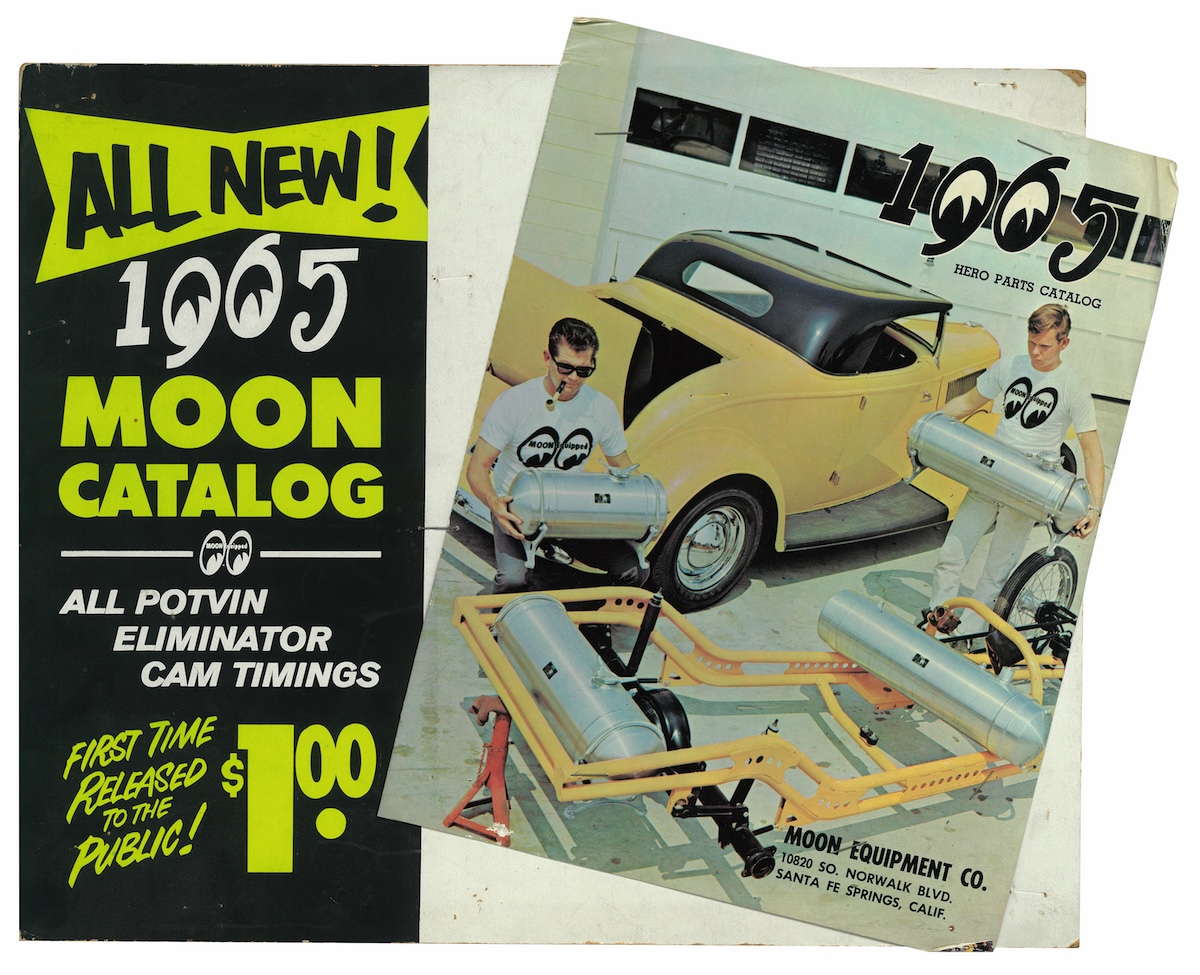
Business continued to boom as Dean got involved in many aspects of the hot rod business and as the Swinging Sixties kicked off, he seemed to be everywhere. For example, in 1961 the Mooneyes dragster graced the cover of HOT ROD magazine, and in ’62 his friend, Carroll Shelby, approached him about assembling the first Cobra in his shop.
Dean also purchased Chuck Potvin’s line of speed equipment around the same time.
In 1963, Gary Cagle won Middle Eliminator running 9.52 seconds/153.06 mph at the Winternationals driving the Mooneyes dragster. Later that year, Dean was instrumental in the expansion of drag racing to Europe when he allowed Las Vegas speed shop owner Dante Duce to take the Mooneyes dragster to England for some exhibition runs against U.K. sports car builder Sydney Allard.
Dean was the man of the moment and consequently was elected the second president of the Speed Equipment Manufacturer’s Association (now SEMA, the Specialty Equipment Market Association) after Ed Iskenderian.
The Moon men returned to England that same year with a new flathead Ford V-8-powered, Devin-bodied sports car. “Moonbeam” became the first American car powered by an American engine with an American driver, Duce, to win the historic Brighton Speed Trials. Duce drove to a terminal speed of 167 mph as Wally Parks looked on.
The versatile “Moonbeam” also raced at Bonneville and at Lions Drag Strip—the eyes were everywhere.
THE NEXT CHAPTER
Unfortunately, brother Buzz, who had been alongside Dean since the beginning, died in 1981 at age 51. After that, Dean’s health began to decline as well, and he let the business slide—maybe he no longer had the energy to keep up with the changing industry.
He died in 1987 and the business languished for five years until two Japanese friends stepped in to salvage the ailing brand when no one else would.
More than a decade before Dean’s death, 17-year-old Chico Kadoma moved to the U.S. from Japan in 1970 after his uncle immigrated and told the family back home he’d found paradise. Kadoma was a car guy into El Caminos who soaked up the So-Cal car scene.
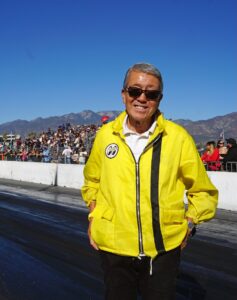
Eight years later, 22-year-old Shige Suganuma came to the U.S. to attend Southern California Christian College and buy some Moon discs for his brother-in-law. The purchase initiated a chain of events.
Dean and Suganuma hit it off and Dean shipped 24 Moon discs to Japan that Suganuma hadn’t ordered, simply saying, “pay me later.” Suganuma sold all the discs and came back for more, eventually becoming Moon’s biggest dealer before Dean died.
Dean’s wife Shirley tried to keep the doors open for a couple of years before her death in 1990. Ultimately unsuccessful, the business closed, and the building fell into decay.
However, in 1992, Suganuma was able to put together a deal with Dean’s eldest daughter, Becky, to purchase what was left of the company lock, stock and eyes, along with the deteriorating building.
According to reports, the city of Santa Fe Springs did not make the takeover easy and required a 30-foot setback that resulted in the demo of part of the original structure featuring the iconic Mooneyes logo—the eyes now sit on the ground instead of high in the sky. It was a hard pill to swallow, but Suganuma—along with his righthand man in the U.S., Kadoma—overcame the obstacles.
Now, more than 30 years on, the Mooneyes brand is still going strong. Headquartered in Yokohama, Japan, there’s a two-story retail store, shipping warehouse, workshops and the popular Moon Café.
The original Santa Fe Springs location is still operating as well, and the company has more than 40 dealers around the world.
Couple all that with two huge recent events—the Yokohama Hot Rod Custom Show and the Mooneyes Christmas Party in Los Angeles—along with Suganuma’s daughter, Emi, handling brand development and social media, and you have a legacy that still shines brightly.
